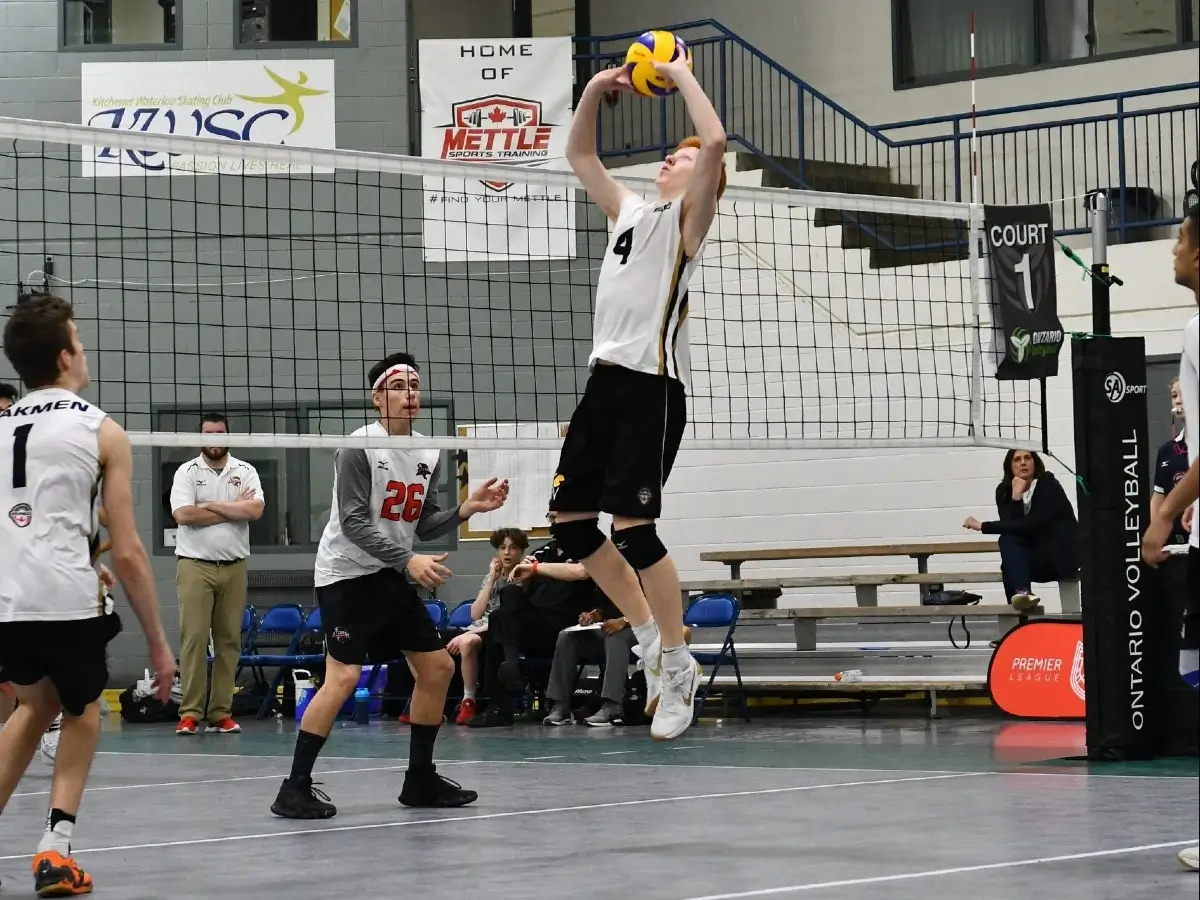Last Updated: January 16, 2024
Since its invention, the game of volleyball has undergone multiple changes all of which have arguably made it better in many ways.
At the heart of every game is the position of a setter. Always known for being at the center of the action, the setter is fast-evolving to become a versatile player who sometimes pulls some unexpected attacks or forms part of the defense.
Clearly, this position is no longer about ball distribution but about being the one individual the team can always count on to significantly change their odds of success.
Let me break down the multifaceted role of setters, highlighting how they have become the go-getters that shape every aspect of this beautiful game.

Making the Impossible Possible
Gone are the days when setters were expected to sit pretty and wait for pristine passes to be delivered to them. The modern-day setter is expected to be highly versatile and adaptive always turning less-than-stellar balls into clear-cut opportunities for the team.
This “go-getter” mentality is sometimes all a team needs to turn the game around especially when faced by aggressive opponents. In other words, you need a good setter to help the defenders offload the ball with ease even after coming under heavy attack.
It is always reassuring when the defense knows that no matter what, someone will show up and take the weight off their backs.
The true mark of a good modern-day setter lies in them being able to turn challenging passes into “works of art” thereby providing the hitters with the opportunity to deliver lethal attacks. This level of adaptability is extremely important, especially in fast-paced games where every side is hunting for some deciding points.
Syncing with the Hitters
The setter needs to understand each one of their hitters in order to make the right passes at the right time. This involves understanding each hitter’s individual abilities, strengths, weaknesses, and preferences. And with that intel, the setter needs to be able to set the ball in accordance with the nuances.
Why so? Because all hitters are built differently. There are those who thrive on quick sets while others prefer slower but perfect sets. Likewise, there are hitters who prefer their balls high while others excel when the ball is placed a little further from the net. Each individual is different and a good setter in modern-day volleyball needs to be aware of that.
Your ability to comprehend and cater to individual preferences introduces a new layer of complexity to this role. So, not only do you need good technical skills but also a deep understanding of key team members to be a good setter.
The Split-Second Decision-Maker
As I pointed out earlier, volleyball is a fast-paced sport, and long gone are the days when setters were merely ball distributors. The modern-day setter is a strategic thinker who constantly thrives in strategic analysis.
They spot situations and make split-second decisions e.g., by analyzing the positioning of their opponents or their fellow teammates. A setter can analyze the opposing team’s defensive formation and particularly take note of any weaknesses present. They also analyze their side of the court and see how best to optimize the impact of the attack.
Today’s setters are increasingly finding themselves in chess-like formations where they are constantly required to be keen and understand every little aspect of the game.
Above all, they need to be swift in tweaking the overall team’s strategy based on the unfolding dynamics of the game.
The “Quarterback” of the Game
Modern volleyball requires setters to be all-around contributors in the game, which is why they have come to be known as the “quarterbacks” of volleyball. This position needs one to contribute to different aspects of the game including defensive and offensive ones.
Other than setting up play, a setter needs to be swift enough to prevent his team from conceding easy points. If this means backing up the defense or swiftly contributing to blocks, this player has to always be ready to play an overarching defensive role.
Likewise, if it means morphing into a lethal attacker or launching strikes from tricky angles, the setter should be ready to be the attacker who gets things done.
The multi-faceted nature of this position adds versatility to the skill set expected of a setter, making them a significant part of the sport.
The Last Man Standing
Previously, setters were not associated with defensive roles as they were merely used to prep the ball for attack. However, with the evolving nature of the game, these players are increasingly finding themselves having to build their defensive prowess. This way, they get to provide an extra layer of defense effectively making it a tad more difficult for the opponents to land points.
The fact that modern-day setters have got to play defensive roles once again underscores the evolution of the game and the fact that it demands more than just the usual playmaking skills. Well-rounded skills are the cornerstone of this position.
The Acer in Chief
It is rare to have setters serve the ball, but this age of volleyball has increasingly seen this becoming the norm. Setters are no longer just facilitators but a key component of the team’s serving power.
That is to say, a setter needs to periodically move from their position, move back to the net, and unleash some lethal shots before quickly resuming their usual position. Why is this important? Well, the ability of a setter to serve balls can easily disrupt the opponent’s rhythm thereby opening up new opportunities for the team.
Launching powerful but well-thought-out serves can at times catch the opposing team completely off guard.
Once again, this underscores the role of this position in the multifaceted nature of the contemporary game.
The Leader
Last but not least, the modern-day setter is expected to be a leader even if they are not the team’s official captain. The position is such a focal point in the game and demands leadership attributes. From helping struggling teammates to taking accountability for errors and energizing the team when the mood is low, this position calls for one to rise above conventional expectations all the time.
Of course, all the players in the game need to be self-driven for the overall team’s success. However, the fact that setters are heavily involved in every aspect of play demands good leadership qualities in order to hold the entire team together.
A setter who easily loses their cool and resorts to blame games at every possible opportunity would ultimately be detrimental to the team’s cohesion. Modern volleyball demands a lot from this position. That’s why the right fit for this position needs to be someone with natural traits, who can bring the team together and coordinate it until everything falls into place.
This takes leadership. It also takes consistency and versatility. And once again it highlights the trend how far setters have come in the fast-evolving sport.
Final Thoughts
Setters need to be dynamic players in order to thrive in the modern world of volleyball. Anyone who merely settles for the role of a playmaker is bound to be overwhelmed by the pressure this position nowadays comes with. Other than dynamism, one needs to develop mental agility particularly owing to the need to bounce back multiple times into the game no matter what the scoreline looks like.
This is a position for the go-getters who thrive in complex situations and still manage to draw strategies to exploit the opponent’s weakness. It is a position for the all-around player who is always ready to make split-second decisions and smoothly shift from offensive to defensive play.
As the game continues to evolve, setters will remain right at the center of the evolution quite literally. And in doing so play a pivotal role in shaping modern volleyball through their multifaceted contributions.
